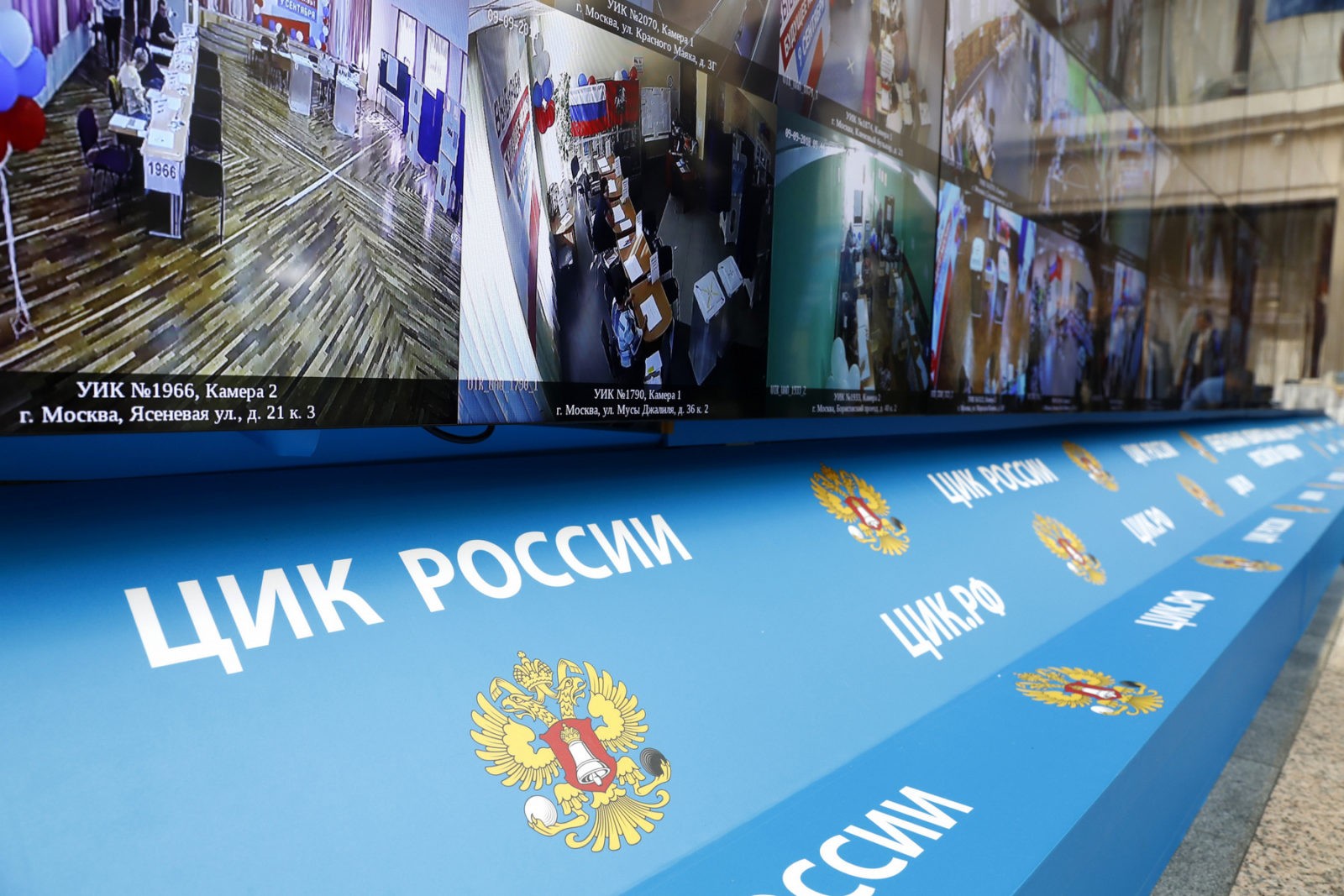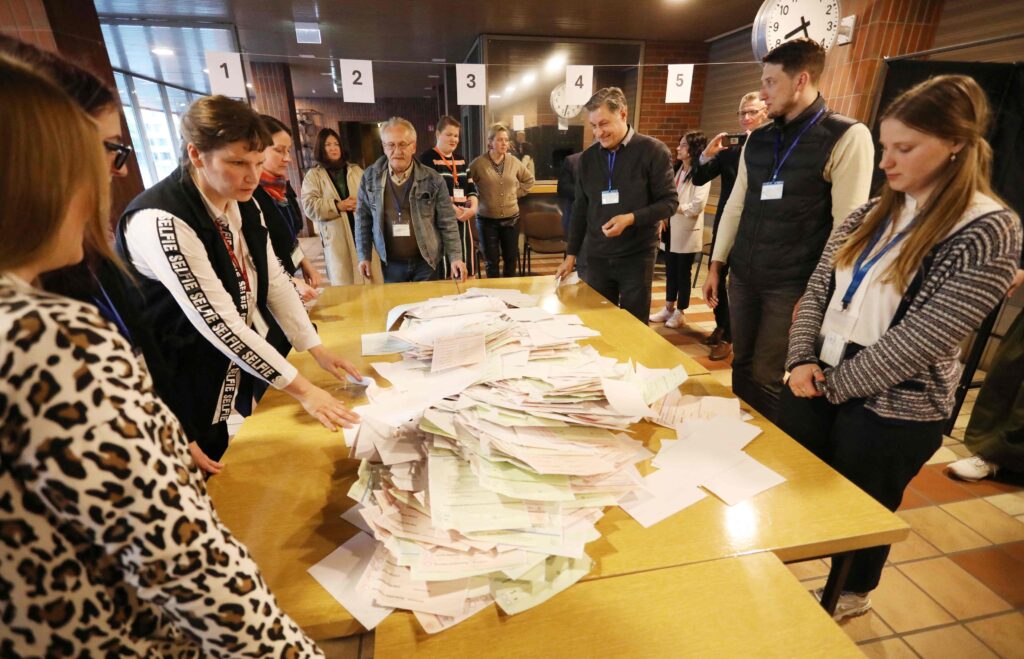The introduction of e-voting during the upcoming election to the Moscow City Duma on September 2019 is under discussion. The editor-in-chief of ‘Echo of Moscow’ (Эхо Москвы) Alexey Venediktov, a member of the Civic Chamber of Moscow, is among the main proponents. Earlier, in the summer of 2018, Vladimir Zhirinovsky, the leader of the Liberal Democratic Party of Russia (LDPR), swore by its necessity too: ‘It would mean direct democracy – the fairest of all possible democracies’. Nikolay Bulayev, the deputy chairman of the CEC electoral regulator, agreed: ‘We support all new initiatives that develop the electoral system. The CEC is always ahead of the rest of the planet on this issue’.
What’s the issue?
In fact, the question is not e-voting per se, but remote voting over the Internet (also called i-voting). E-voting is a broader term, which encompasses many technologies including remote voting. Both electronic voting machines (EVMs) and direct-recording electronic counting classify as e-voting. In other words, e-voting is already present in Russia in some form, i.e. in the use of optical scanning systems.
Internet voting can also assume several forms. It can take place in a controlled environment, when voting machines connected to the Internet are installed at a polling station. Or, it can happen in remote locations, when an individual votes on their personal device outside the polling station. In Russia, we are speaking about the latter case. That is, remote voting from anywhere in the world on your personal device.
What for?
One of the reasons for the e-voting debate is low turnout. During the 2014 election to the Moscow City Duma, turnout reached only 21%. This was despite the re-introduction of early voting after a long break, which gave Muscovites more chances to vote. Sergey Sobyanin said at the time: ‘We have a huge but well-connected city and on election day you can move from one district to another, and vote in accordance with your place of registration without absentee ballots’.
In any case, the argument that e-voting increases turnout is controversial. Experience in other countries shows a difference of a just a few percent. The difference is negligable during a first election. Turnout did not increase to any great extent either in Estonia or Switzerland.
E-voting may well be a more convenient way to express your voting preferences. Especially when there is no need for extra efforts such as separate registration, or a request for a special certificate and a password. Yet, convenience rarely attracts new voters to polling stations. Instead, regular voters go for that option. Thus, the share of online voters grows from one election to the next, while turnout barely rises, if at all.
Another reason for introducing e-voting is to attract certain target groups. Young voters, in particular. The argument is that the younger generation spends much more time online. It will thus be more willing to use the new method. But the experience of countries which introduced e-voting refutes this thesis. In Estonia, online voting was at first most popular among 40-50-year olds. With time, age ceased to play a role in the choice of voting method.
The main factor that shapes voting behaviour is not the convenience of the voting method but election competitiveness. Trust in institutions matters; and so does the belief that your voice matters. There are a plethora of studies of e-voting, early voting or simplified voter registration systems and other measures. For example, Gronke, P., Galanes-Rosenbaum, E., & Miller, P. A. (2007), “Early voting and turnout”, PS: Political Science & Politics, 40(4), 639-645; Fitzgerald, M. (2005), Greater convenience but not greater turnout: The impact of alternative voting methods on electoral participation in the United States. American Politics Research, 33(6), 842-867).
An experiment for the sake of experimenting?
The effectiveness of a new technology can be assessed no sooner than after several electoral cycles, if the same technology is used. The first election using the new technology can elicit either high turnout or even lower turnout. Higher turnout can mean an interest in new technology or a desire to try out a new voting method. Still, there is no reason to believe this is not a one-time effect and that interest in new technologies will persist until the next election. The reason for the decreased turnout may be due to problems with the process. For instance, delays in obtaining the required personal code or system malfunctions. Given tight deadlines for preparing an experiment, there is an elevated risk that something could go wrong. Countries that had been preparing for the experiment much longer than six months faced these problems.
Second, it is costly to create a system of online voting for a single experiment. To ensure a return on the investment, the system of e-voting should be used in the most possible number of elections. Technologies, after all, can become obsolete. In Estonia, the system of e-voting has been updated several times since 2005.
Third, constant experiments with electoral legislation are detrimental to both voters and candidates. Before either side gets used to playing by the new rules, the next set is introduced. Besides, novelties interfere with strategic voting behaviour – voters want their voice heard. An online voter will vote having less information about candidates compared to one who votes on election day. Internet voting, after all, takes place often before the regular voting day. Candidates will also have to adapt their election campaigns.
Fourth, it is not clear what conclusions come from previous experiments with elections in Russia. For example, in their discussions on e-voting, experts refer to mobile polling stations in areas bordering Moscow. In particular, during the mayoral election in Moscow in 2018. ‘As the head of the monitoring team, I came to the conclusion, which I reported to the commission of the Social Council, that the initiative consumed a lot of resources but its effectiveness was negligible,’ Venediktov says. Can we be sure that the system of e-voting will not suffer the same fate?
Learn from others’ mistakes
Like Estonia, many other democracies have tried to introduce e-voting at various levels. The main wave of fascination with e-voting came in the early 2000s. But, most countries abandoned the idea. Some of the top examples include Norway, the UK, Australia, the Netherlands and France. Each invested resources in the development and deployment of e-voting systems. Each abandoned the idea for various reasons. Panama and Pakistan are the latest who joined the club of I-voting. Thus, e-voting is no longer the prerogative of well-developed countries: they either have already implemented it or tried it out and dropped.
Can Russia catch up with them? In many countries where e-voting has taken root (in Estonia in national elections, in Switzerland at the canton level or in Canada at the local level), there is a high level of institutional trust. Moreover, with recent studies, the credibility of e-voting (not age or computer literacy) is one of the main factors used to predict whether a voter will use the new system or not. In Russia, the deployment and usage of the majority of voting innovations came with scandals and accusations of electoral violations. The CEC’s credibility among Russians is not very high, at approximately 66%. Besides, the very idea of voting outside a polling station (absentee voting) is new to Russia. In other countries, e-voting arrived in an environment where the practice of voting by post had been in place for a long time. This helped build trust in the absentee voting system.
Venediktov mentions violations of voter secrecy, hacker attacks and problems with election observation and vote counting as potential threats generated by e-voting. Many threats are typical of Russia, since vote rigging is not an issue for established democracies. According to Venediktov, ‘In Estonia, they are not concerned about election fraud. They simply do not think about it. They do not face this challenge. But we do. This is a question of trust. In Estonia, they must have a different level of trust’. This way of thinking is wrong. Trust in the Estonian system of e-voting not based on the absence of threats. Rather, it is on the transparency and accountability of the system. The Estonian system of e-voting has many tools to reduce risks and threats. For example, anyone can volunteer to become an observer of the e-voting process. Observers are provided with free training that acquaints them with the details of the system. It helps point out what they should focus on and what the main vulnerabilities are. Next, observers are present at all stages of e-voting. Another tool is the standard of an external audit of the e-voting system, usually carried out by one of the ‘Big Four’ audit companies. Other tools include making the source code publicly available. Equally there is the possibility of re-voting using a paper ballot. This prevents voter bribery or coercion. Finally there is the possibility to verify one’s vote – which is all stipulated in the Estonian electoral legislation.
A reliable, trustworthy e-voting system cannot be launched within six months. Before making an experiment, it would be worthwhile to analyse the feasibility of such a system. That is, what voters is it meant to attract? How much will it cost? What do voters think about it? How does this innovation relate to other electoral experiments which failed and were unable to mobilise voters?










